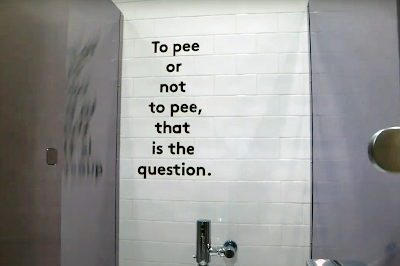Here's a confession: some of my best exhibit ideas have come from places that have nothing to do with museums. That breakthrough wayfinding solution? Inspired by IKEA's store layout. The interactive that finally got teenagers engaged? I borrowed the concept from a skateboard shop in Portland.
Museum professionals sometimes act like we're the only industry that cares about visitor experience, but the truth is, we're surrounded by brilliant design solutions just waiting to be adapted. The question isn't whether to "borrow" ideas from other industries—it's how to "steal" smartly.
The Great Idea Heist: Where to Look
Retail: The Masters of "Just One More Thing"
Walk through any well-designed store, and you'll see visitor flow management that puts most museums to shame. Retailers have spent billions figuring out how to guide people through spaces, create desire, and encourage exploration.
What They Do Right:
• Sight lines that draw you deeper: You can always see something interesting ahead.
• Clear navigation without being obvious: You know where you are and where you're going.
• Strategic placement of "impulse" experiences: High-interest items at decision points.
• Varied pacing: Busy areas followed by calm spaces, creating rhythm.
Museum Takeaway: That "featured artifact" placement at the end of your gallery hallway? Pure retail psychology. Visitors see it from the entrance and naturally move toward it, encountering your other content along the way.
Theme Parks: Emotional Journey Architects
Disney didn't invent storytelling, but they perfected the art of emotional pacing in physical spaces. Every step of a Theme Park experience is choreographed to build anticipation, deliver a payoff, and leave you wanting more.
What They Do Right:
• Line design that's part of the experience: The wait becomes preparation for the main event.
• Layered storytelling: Multiple levels of detail for different types of visitors.
• Transition spaces: Clear beginnings, middles, and ends to experiences.
• Multi-sensory immersion: Sound, smell, temperature, and lighting work together.
Museum Takeaway: Your exhibit entrance isn't just a doorway—it's the opening scene of your story. What if you treated it like the loading area of a theme park ride, building anticipation for what's coming?
Playground Design: The Physics of Fun
Playground designers are brilliant experience architects. They create spaces that encourage specific behaviors, accommodate different ages and abilities, and somehow make parents want to linger while kids are completely absorbed.
What They Do Right:
• Multiple difficulty levels in one space: Challenging for experts, accessible for beginners.
• Natural supervision points: Parents can watch from comfortable positions.
• Flow that prevents bottlenecks: Multiple paths to the same destinations.
• Materials that age gracefully: Built to withstand weather and heavy use.
Museum Takeaway: That hands-on science station where kids naturally help each other figure things out? That's playground psychology at work—creating spaces where collaboration happens organically.
Other Industry-Specific Lessons That Translate to Museums
From Coffee Shops: The Art of Comfortable Lingering
The Lesson: Different seating for different social configurations (solo work, couples, small groups, large gatherings)
Museum Translation: Create varied spaces within your galleries—standing height for quick interactions, comfortable seating for deeper engagement, communal areas for group discussions.
From Bookstores: Discovery by Wandering
The Lesson: Mix of organization and serendipity—you can find what you're looking for, but you'll stumble across things you didn't know you wanted.
Museum Translation: Clear thematic organization with unexpected connections and cross-references that reward exploration.
From Restaurants: Pacing and Appetite
The Lesson: Building anticipation, managing expectations, and knowing when people need a break from intense experiences.
Museum Translation: Heavy content followed by lighter interactions, complex ideas broken up with hands-on activities, and "palate cleansers" between intense emotional experiences.
From Hotels: Creating Immediate Atmosphere
The Lesson: Great hotel lobbies establish mood and expectations within seconds of entry. They tell you what kind of experience you're about to have.
Museum Translation: Your lobby and entrance sequence should immediately communicate your museum's personality and prepare visitors for your content.
Permission to Experiment
Museums sometimes suffer from "museum-ness"—the assumption that we have to look and feel like "traditional" museums. But your visitors don't live in museums. They live in a world of retail spaces, entertainment venues, and public spaces that have evolved sophisticated approaches to human experience design.
Your visitors' expectations are shaped by the best customer experiences they have anywhere, not just in other museums. If Starbucks has figured out how to make waiting in line a pleasant experience, we can learn from that. If IKEA can guide people through a complex warehouse while making it feel like an adventure, maybe we can too.
Great ideas don't care about industry boundaries. The principles that make a bookstore browsable, a playground engaging, or a restaurant memorable can make your museum more effective.
Your next breakthrough exhibit idea might be waiting for you at the grocery store, the airport, or that well-designed playground down the street. Keep your eyes open—inspiration is everywhere!
Don't miss out on any ExhibiTricks posts! It's easy to get updates via email or your favorite news reader. Just click the
link on the upper right side of the blog.
Paul Orselli writes the posts on ExhibiTricks. Paul likes to combine interesting people, ideas, and materials to make exhibits (and entire museums!) with his company
If you enjoy the blog, you can help keep it free to read and free from ads by supporting ExhibiTricks through our

.jpg)






















